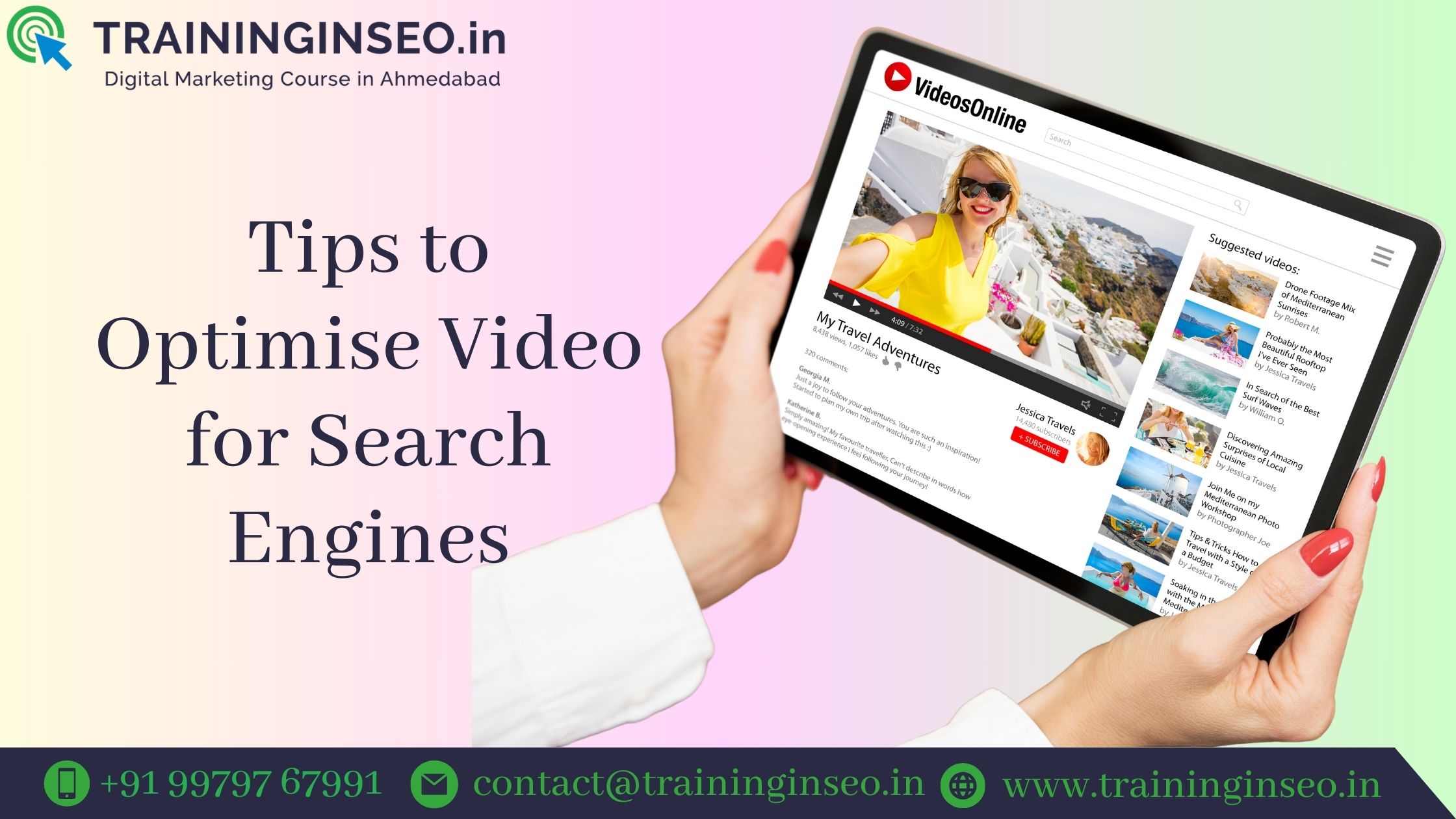Tips To Optimise Video for Search Engines

Online video consumption is at an all-time high in the current digital era. As video platforms such as Vimeo, TikTok, and YouTube continue to grow in popularity, more and more companies are starting to use video content in their marketing campaigns. Digital Marketing training in Ahmedabad is also teaching video content to their students due to its immense popularity. Making interesting videos alone is insufficient, though. Making sure that your target audience can find the videos is essential to maximising the power of video marketing. Video SEO (Search Engine Optimisation) is useful in this situation.
Video SEO and the rise of video content
The practice of optimising video material to increase its visibility in search engine results, particularly on Google and YouTube platforms, is known as video SEO. It entails a number of calculated strategies that aid search engines in deciphering the content of your video and its relevance to user queries. There has been a significant movement in the internet landscape towards video content. Businesses now have a fantastic chance to establish a more meaningful connection with their audience because of the increase in video consumption. But yours needs to get noticed online, as there are millions of videos competing for viewers’ attention.
Tips for businesses to optimise their videos for better search engine visibility
Keyword search
Researching keywords is the first step in video SEO, just like in traditional SEO. Determine the terms and phrases that your target market is most likely to use in their searches for information in your area or business. You can find these keywords with the use of tools like YouTube’s search suggestion feature or Google’s Keyword Planner.
High quality content
A sufficient quantity of optimisation cannot take the place of excellent, captivating content. Make valuable videos that capture your viewers and keep them watching through to the end. Make sure your films are engaging for viewers because search engines will reward you for it.
Optimising video titles and descriptions
Naturally include your goal keywords in the title and description of your video. Because the title is frequently the first thing users see in search results, make sure it is both attention-grabbing and informative. The description ideally entices readers to watch by offering more background information.
Transcriptions and Closed Captions
Accurate transcriptions and closed captions are essential components of video optimisation. These text-based elements provide a written transcript of spoken content, increasing accessibility for a larger viewership and assisting search engines in deciphering the meaning of your video. To increase their efficacy, make sure your transcriptions and captions are accurate and in line with the spoken language.
Long tail keywords
Long-tail keywords have just as much potential for video optimisation as broad keywords do. Even though their search numbers are lower, their audience is quite specific. These keywords have the power to completely shift the game since they make your movie stand out in a crowded field. You may balance exposure and relevancy in your video’s metadata by using a combination of short- and long-tail keywords, which will eventually increase the chances that your video will rank highly on search engines.
Upload high quality videos with good resolutions
Start your road towards video optimisation by publishing top-notch content. In addition to enhancing the viewing experience, crisp images and clear audio also satisfy search engine algorithms. Choose aspect ratios and resolutions that are suitable for your platform so that your video plays smoothly across a range of devices. Everything about uploading videos and other things are taught in SEO training in Ahmedabad so that students become thorough professionals in the future.








Reader Interactions